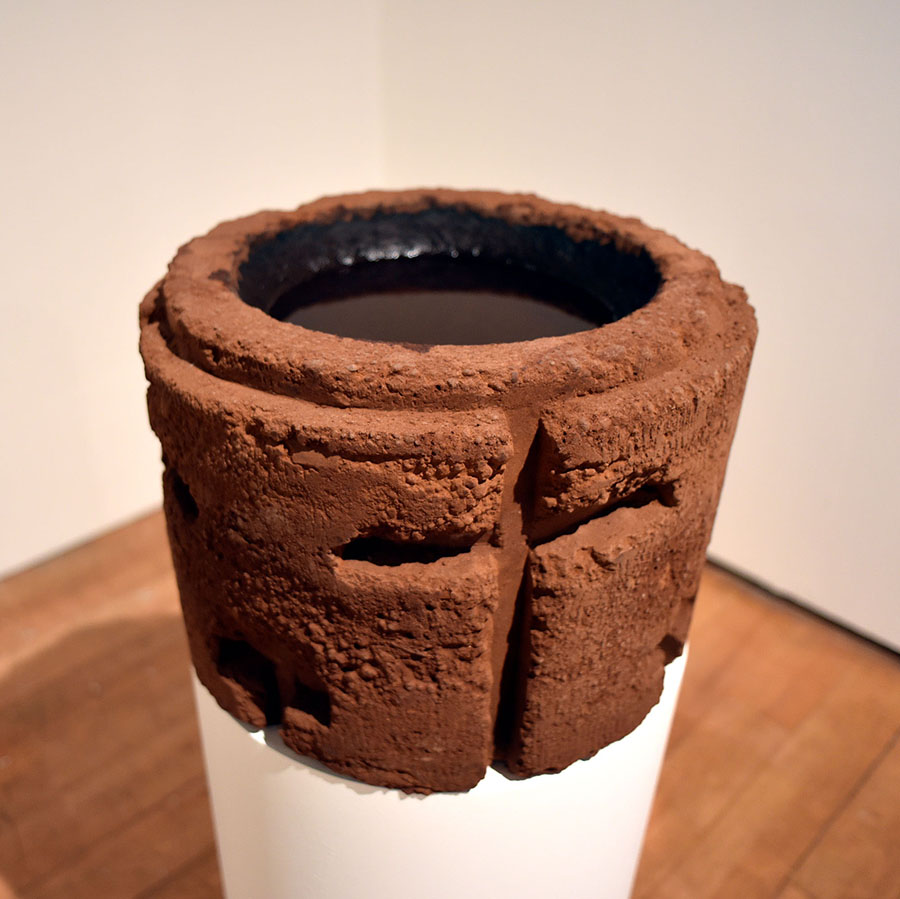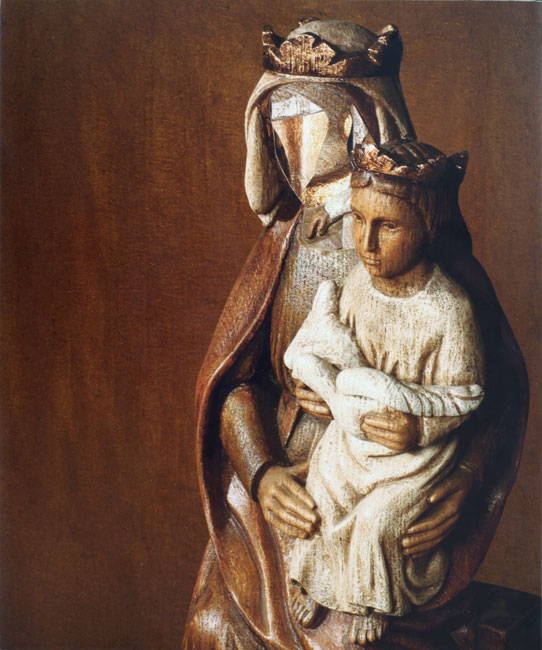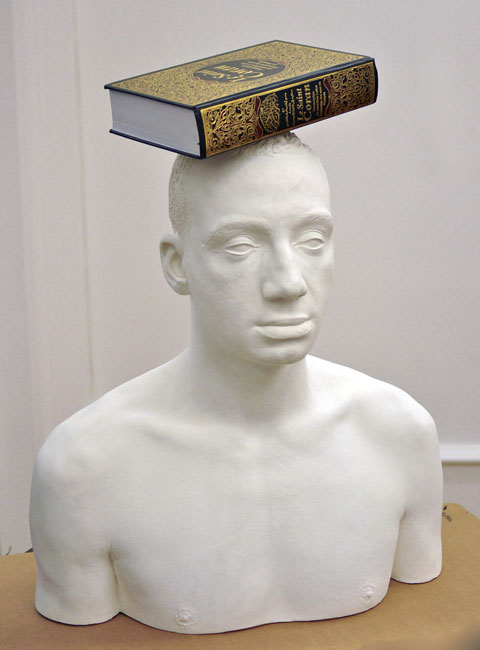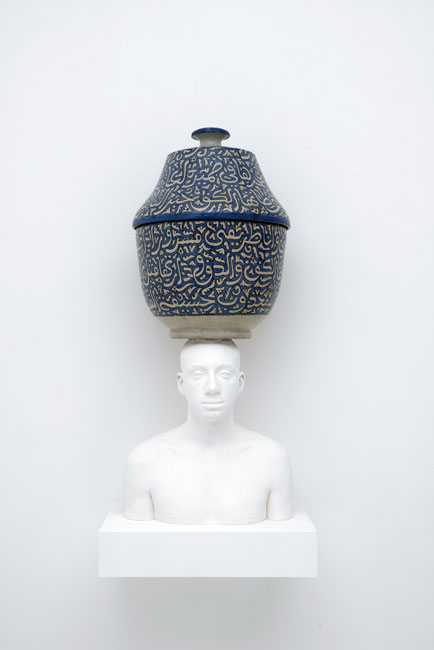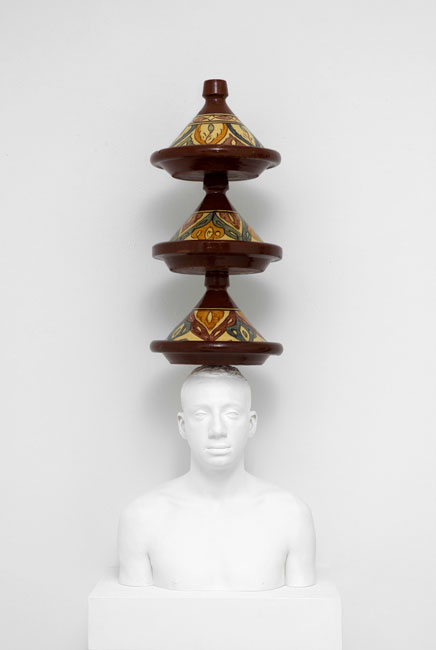zandpoortvest 10
be 2800 mechelen
t +32 15 336 336
m (b) +32 478 811 441
m (d) +32 475 477 478
Mehdi-Georges Lahlou: selected works & exhibitions
2020 Faculty Club Leuven > 31.12.2020

Paradis Incertain, 2014, lambda print on dibond, ed. 1/3, 4.500 €
Under the Sand, the Sun, galerie Transit, 03.02 - 03.03.2019
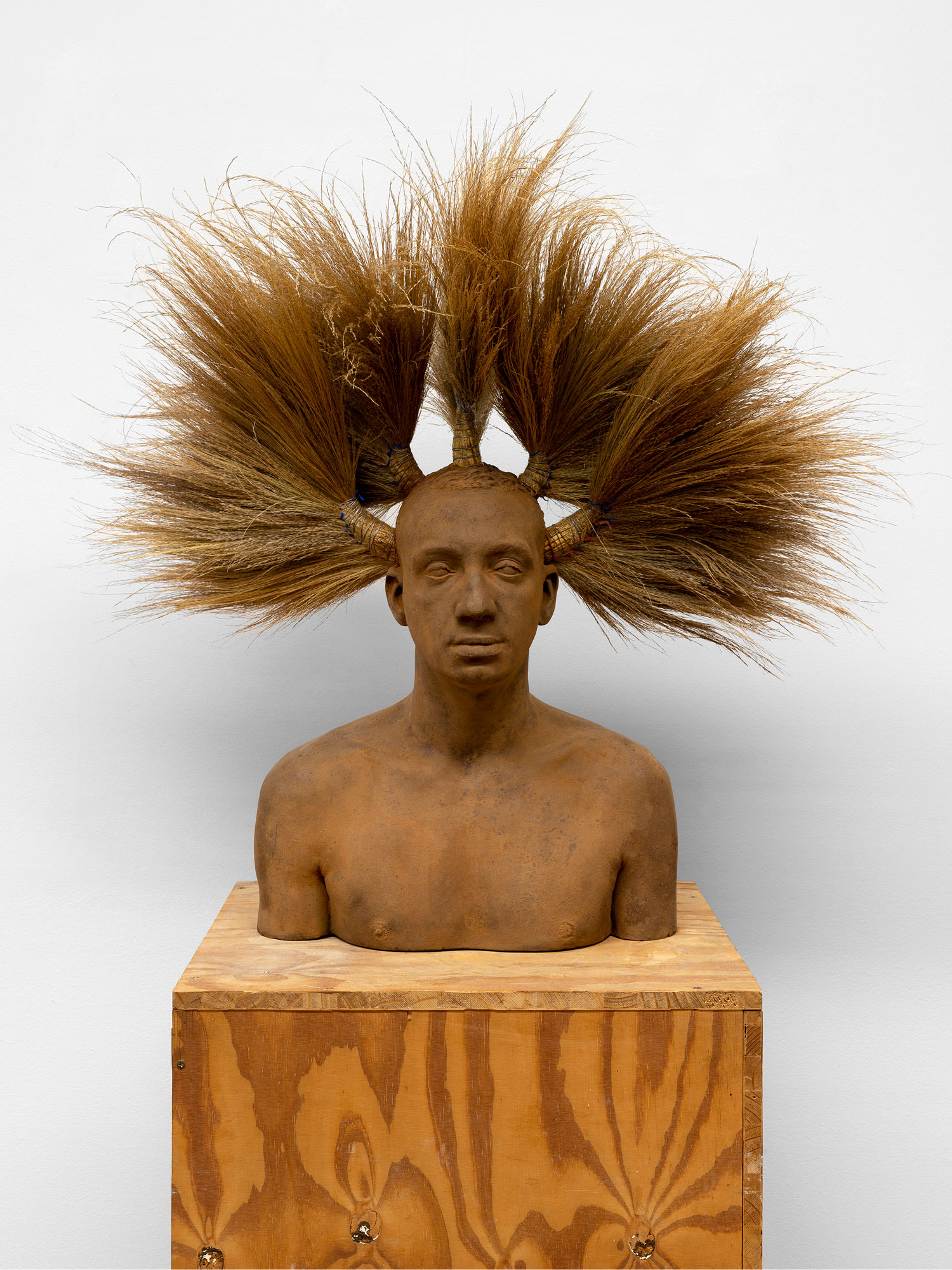
Créature pour Chaman, ou Autoportrait à la Cannelle, 2018, cinnamon, broom from Cambodia, unique, 82 x 42 x 40 cm
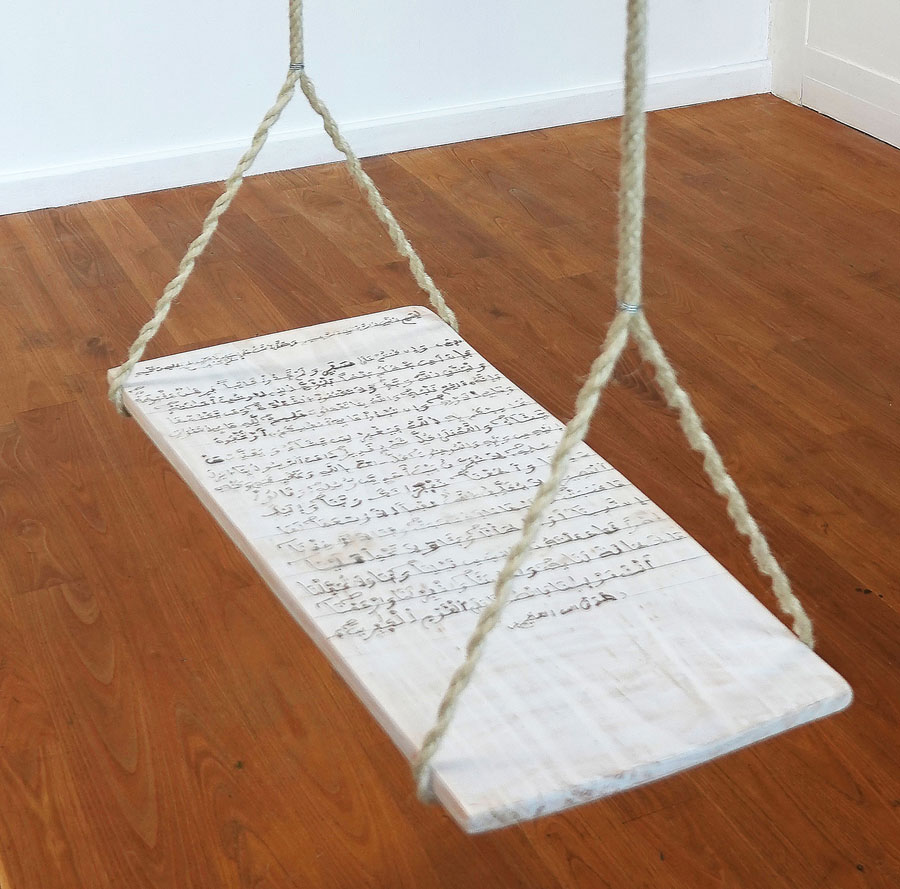
Balançoire - Al Baqara,2019, Koranic tablet from Morocco, unique, 55 x 29 x 1,5 cm

Under the Sand, the Sun, 2019, photo on dibond, framed, edition 4 + 1 ap, framed 20 x 27 cm
ENGLISH
In Under the Sand, the Sun, Mehdi-Georges Lahlou collapses reality and unreality, material and fantasy, and the here and there through the juxtaposition of absurd forms and the immaterial sounds of children playing, birds singing, boats on the water, the city in motion. This is not, however, a collapse of meaning into meaninglessness but rather the reality of Lahlou's fantastical creatures. From a bust of the artist made from cinnamon and plumes of dried grass, Créature pour Chaman, ou Autoportrait à la Cannelle (2018), to a childlike mannequin figure covered in Muslim carpets and flying a cross-adorned kite, Enfant Tapis en bord de mer, these creatures are both real, materially existing within our space, and unreal, with their impossible cinnamon and carpet bodies. Stranger by far, though, is Enfant Balais (2019), the last of the figures. Along with the other two works, we might read it as a person; its verticality haunts the gallery space before us like a bodily presence but, faceless, it fails to fully register as human. It oscillates between the humorous and the absurd, like a shaman's creation or the wild thing of a child's imagination. Like three totems from a dream only partially remembered, we encounter these creatures emerging before us as if summoned from another reality. We encounter them in our world inasmuch as we fail to enter theirs. In the video Et je sombre (2008), we see the last of the artist's creatures, namely the artist himself in a white dress and red wig, walking along a line traced in the sand, disappearing beneath the gentle waves of the sea. With this final creature gone, our transfixion breaks and the fantasy is suddenly dispelled, exorcised or banished to whence it came, leaving us to wonder who was the shaman who created these fantastical creatures, the artist or ourselves. This confusion between memory and imagination is the magic of the work, though, as Lahlou leaves us on the edge between the real and the unreal, between the world we thought we knew and the apparition he has summoned before us.
NEDERLANDS
In Under the Sand, the Sun, laat Mehdi-Georges Lahlou werkelijkheid en onwerkelijkheid, materie en fantasie en het hier en het daar samenvallen door het naast elkaar plaatsen van absurde vormen en de immateriële geluiden van spelende kinderen, zingende vogels, boten op het water, de stad in beweging. Het betreft hier echter geen ontbinding van betekenis in zinloosheid, maar eerder de wezenlijke realiteit van Lahlou's fantastische wezens. Deze wezens – van Créature pour Chaman, ou Autoportrait à la Cannelle (2018), een buste van de kunstenaar gemaakt van kaneel en gedroogde grashalmen, tot Enfant Tapis en bord de mer, een kinderlijke poppenfiguur bedekt met islamitische tapijten en een met kruisen versierde vlieger vasthoudend – zijn zowel echt, materieel bestaand in onze ruimte, als onwerkelijk, met hun onmogelijke kaneel- en tapijtlichamen. Nog vreemder is de sculptuur Enfant Balais (2019), die we net als de andere twee werken, kunnen lezen als een persoon; een verticaliteit die de galerieruimte bezet als een lichamelijke aanwezigheid, maar er als gezichtloos wezen niet in slaagt om als geheel menselijk beschouwd te kunnen worden. Het balanceert tussen het humoristische en het absurde, als een creatie van een sjamaan of een wild wezen uit de verbeelding van een kind. Als drie totems uit een slechts gedeeltelijk herinnerde droom ontmoeten we deze wezens die voor ons verschijnen alsof ze uit een andere werkelijkheid werden opgeroepen. We ontmoeten ze in onze wereld daar we er niet in slagen die van hen te betreden. In de video Et je sombre (2008) zien we de kunstenaar zelf in een witte jurk en rode pruik, die langs een lijn loopt die in het zand is getrokken, om te verdwijnen onder de zachte golven van de zee. Met het oplossen van dit laatste wezen wordt ook onze begoocheling verbroken en de fantasie verdreven, uitgebannen of verbannen naar de plek waar ze vandaan kwam, terwijl wij achterblijven met de vraag wie de sjamaan was die deze fantastische wezens wist te scheppen, de kunstenaar of wijzelf. Uit deze verwarring tussen herinnering en verbeelding ontstaat de magie van het werk: Lahlou laat ons achter op de grens tussen het werkelijke en het onwerkelijke, tussen de wereld die we denken te kennen en de verschijning die hij voor ons heeft opgeroepen.
Conor Moynihan, 2019
Theater 8 & 9.11.2018 in Rouen

Eerste theaterstuk van Mehdi-Georges Lahlou ging in première in Rouen: "Dans une tonalité absurde et légère Mehdi-Georges Lahlou s'empare du poème The ring of the dove d'Ibn Hazm, forme d'anthologie amoureuse dans l'Andalousie du XIème siècle.
More info
Art Brussels 2018, Tour & taxis
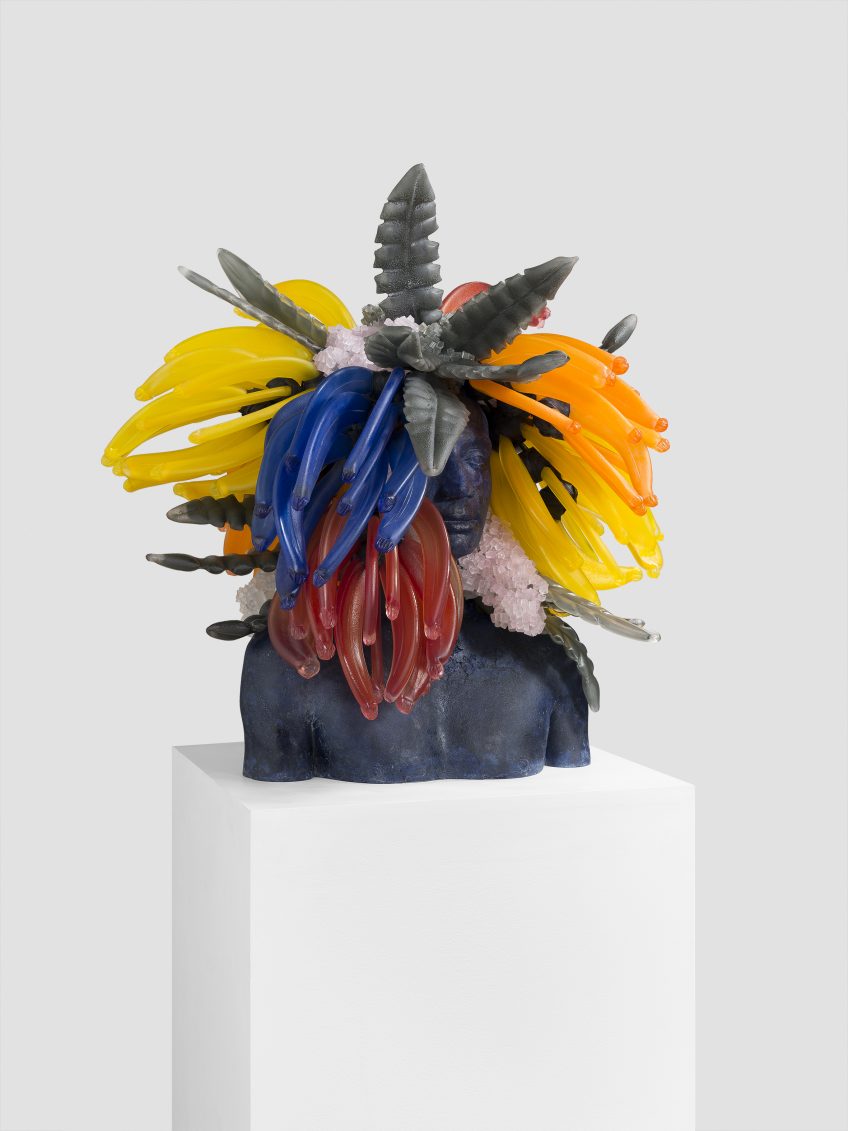
Bananier, 2017, glass, unique, 3 versions, 75 x 80 x 70 cm
Bénitier, 2017, cinnamon, epoxy, water, unique, 37 x 40 x 40 cm

I used to be Nefertiti, 2014, plaster, painted, unique, 60 x 24 x 45 cm
And Even If Nothing Takes Root in this Oasis, galerie Transit, 13.11 - 18.12.2016
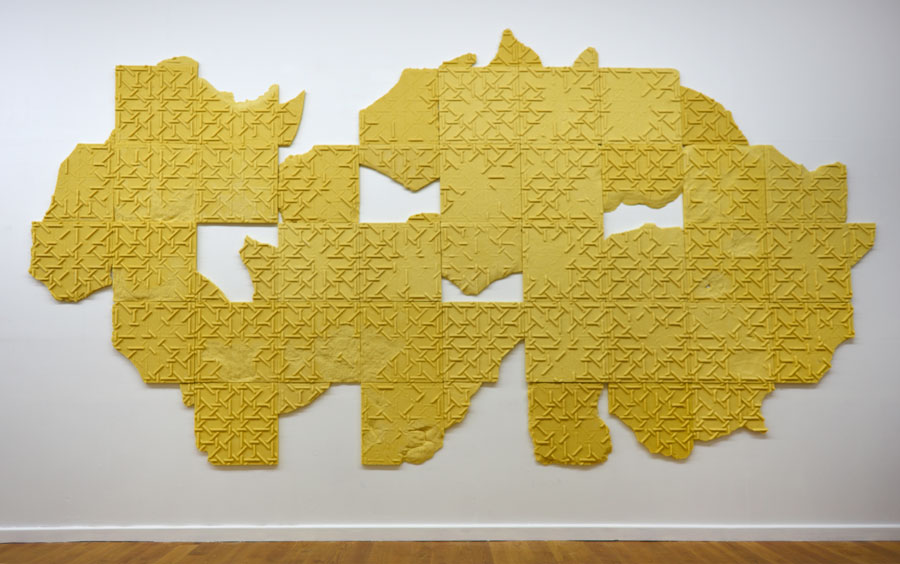
NL De derde solotentoonstelling van Mehdi-Georges Lahlou in Galerie Transit (Mechelen) "And Even If Nothing Takes Root in this Oasis" nodigt uit tot een denkbeeldige pelgrimstocht doorheen de relicten en herinneringen van een "oriëntalistische" beschaving. Door elementen van verschillende culturele contexten naast elkaar te plaatsen, deconstrueert de kunstenaar de relatie tussen het zogenaamde "Westen" en "Oosten" als geografische, culturele, en vooral mythische entiteiten. We bevinden ons, te midden van het afbrokkelende erfgoed van een ingebeeld verleden, op een plaats van paradoxen: een ruimte zonder tijdelijke, culturele of territoriale oriëntatiepunten die zich door realiteit en fictie heen beweegt. Lees hier het volledige persbericht met tekst van Sasha Pevak |
ENG The third solo exhibition of Mehdi-Georges Lahlou at Galerie Transit (Mechelen) "And Even If Nothing Take Root in this Oasis" invites to an imaginary pilgrimage across the relicts and the memories of some "orientalist" civilization. By juxtaposing the elements of diverse cultural contexts, the artist deconstructs the relationship between the so-called "Occident" and "Orient", as geographical, cultural, and above all – mythical entities. Among the disintegrating heritage of an imagined past, we find ourselves in a lieu of paradoxes: a space without temporal, cultural or territorial landmarks that glides between reality and fiction. Read here the complete press release with the text of Sasha Pevak |
FR La troisième exposition personnelle de Mehdi-Georges Lahlou à la Galerie Transit (Mechelen) « And Even If Nothing Takes Root in this Oasis » propose un pèlerinage imaginaire à travers les reliques et la mémoire d'une certaine civilisation « orientaliste ». Par la juxtaposition d'éléments provenant de contextes multiples, l'artiste déconstruit les rapports entre les soi-disant « Occident » et « Orient », en tant qu'entités géographiques, culturelles et surtout entités mythiques. L'exposition présente l'héritage d'un passé imaginaire, elle nous transporte dans un lieu de paradoxes : un espace sans véritables repères temporels ou territoriaux, qui glisse entre réalité et fiction. |
Artikel in Collect, december 2016, in het nederlands | Clickez ici pour l'article dans Collect,, decembre 2016, en francais
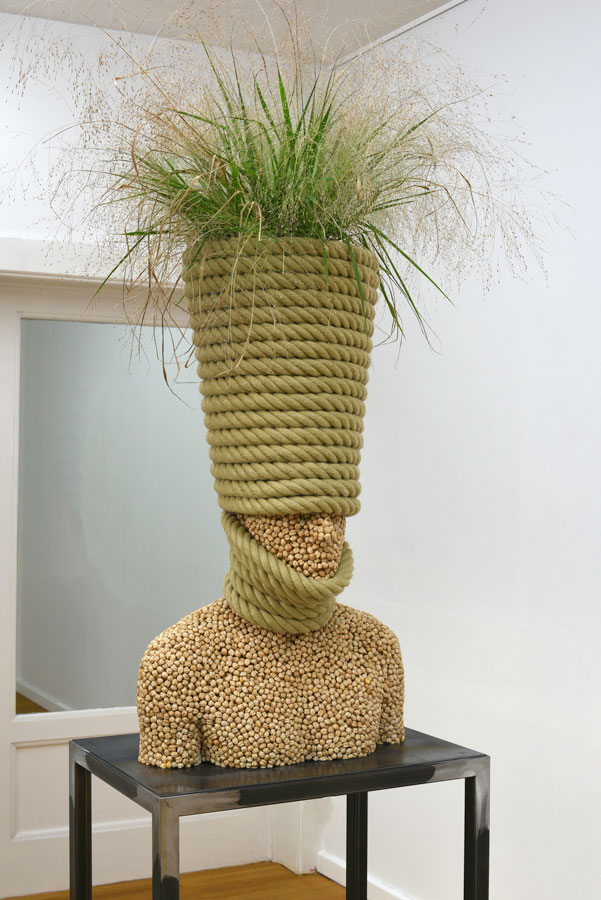
Jannah, 2016, chick peas, plant, rope, resine epoxy, 120 x 45 x 30 cm, edition 3 + 1 ea
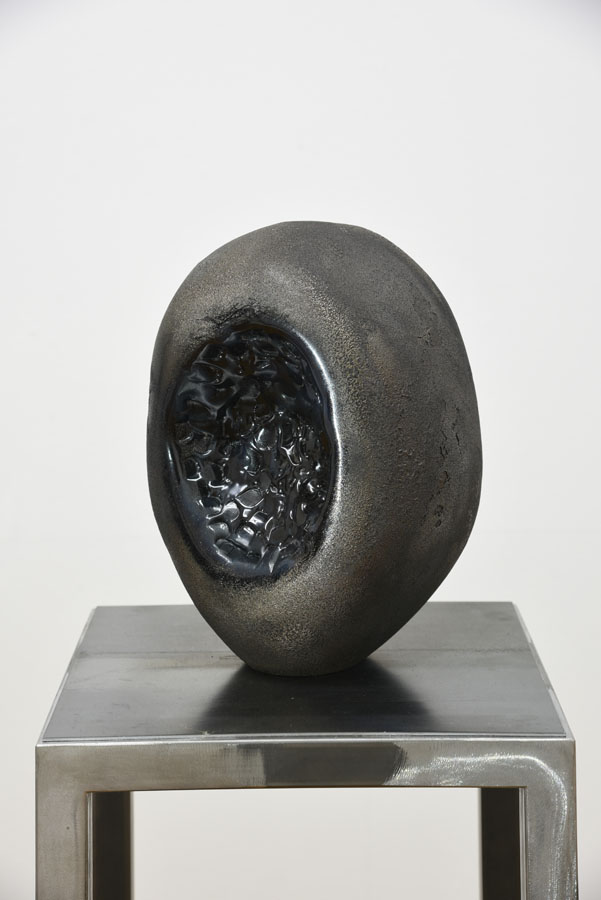
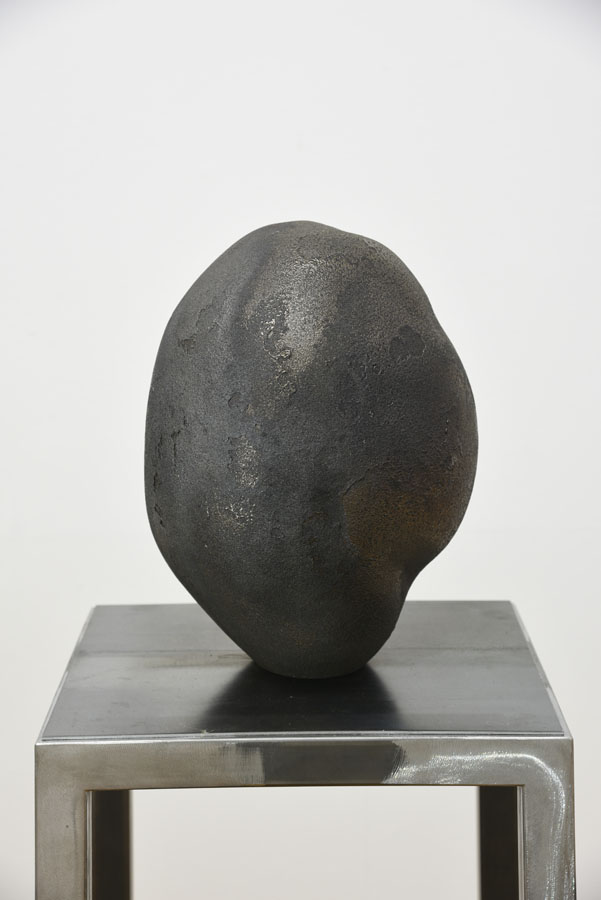
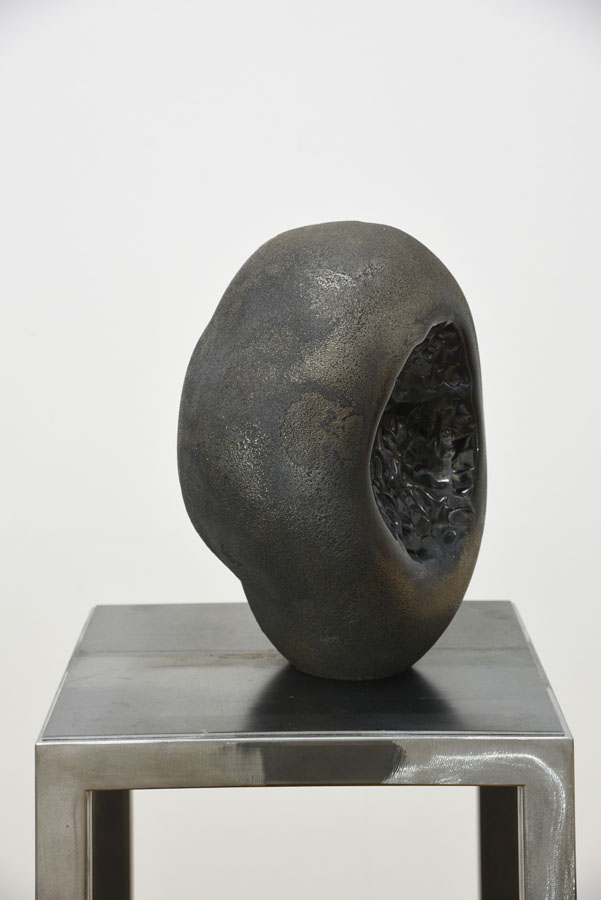
Uncertain Black Stone, nr 2, 2016, blown glass, 29 x 21 x 16 cm, unique, three versions + 1 ap. Price on request
Uncertain Black Stone has a biomorphic body. While the most of its irregular black-tinted surface seems to be absorbing the light, a part of it looks differently. An incurved cavity – supposedly a point of shock or a trace of hundreds of hands that shaped and polished it during an unknown ritual – vividly plays with the light. The Uncertain Black Stone definitely has extraterrestrial origins. Either a part of a meteorite, fallen on Earth, or a holy envoy, it respires with mystery. Does it contain a new form of life? Or has it given birth to human civilization? In all cases, the stone – born in vacuum and charged with the cosmic energy – merits its sacred status, while everyone who touches it will be endowed with blessing. [Sasha Pevak]
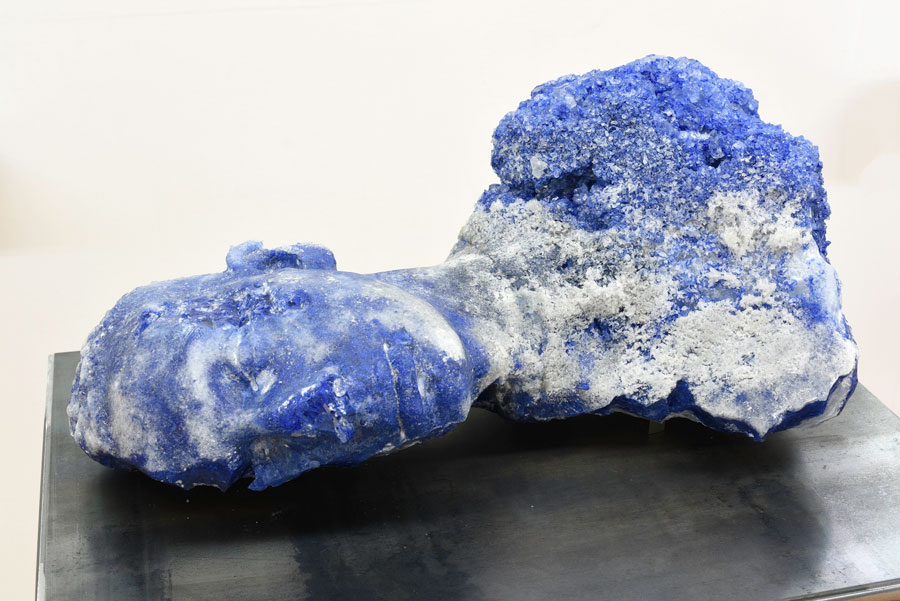
The Leftovers Oriental Blue, 2016, private collection
Even the Dust Remains, In Flanders Fields Museum, Ieper, 2015-2016
Le Grenadier
New book available in the museum, at editions LaMuette and in galerie Transit, 25€
nieuwe publicatie beschikbaar in het museum of in de galerie, 25 €
Hourglasses | Solo presentation Art Brussels 2015
La dernière installation de Mehdi-Georges Lahlou propose un temps de méditation. S’arrêter quelques secondes, quelques minutes, devant ces cinq sabliers géants. Démultipliant leur échelle, ils étirent aussi le temps, en tentant de reproduire la distance temporelle entre les cinq prières de l’islam qui rythment les jours des croyants. Observer dans leurs bulles d’air, non pas des grains de sable qui s’écoulent, mais de la semoule. En filtrant, elle semble danser à travers l’interstice, telle une métaphore du passage. Tendre l’oreille et capter son bruissement. Son doux chant silencieux qui rappelle, par inversion, la puissance de l’appel à la prière.
Depuis 72 vierges, une installation d’étendards immaculés à la dernière Biennale de Dakar, le travail de Mehdi-Georges Lahlou se fait plus universel. Les marqueurs culturels, plus subtils. La semoule, Lahlou avait déjà moulé son visage dans cette même matière (Head, 2013) : une tête renversée qui semblait annoncer ce mouvement d’inversion du sablier, mouvementcapable de tout faire basculer et reprendre à zéro. Pour ce projet dans le cadre des Réalisateurs, programme dirigé parFabrice Hyber, Mehdi-Georges Lahlou a choisi de pousser plus loin son processus de recherche, et d’explorer le temps de lamatière. Matière industrielle, d’habitude travaillée à la main, elle s’envisage ici encore autrement : unité temporelle, fluide de la pensée, pure instrument… [Marie Moignard]
The Hourglasses, Glass & couscous, ed 3 + 1ap + 1 in set, 5 x (73 x 30 x 30 cm)
Paradis incertain | 15.09 - 20.10.2013

|
||
Met een goede dosis schittering en speelsheid presenteert Mehdi-Georges Lahlou nieuw werk in zijn tweede solotentoonstelling in galerie Transit Mechelen, dit onder de titel 'Paradis incertain’. Als Frans kunstenaar, met een Marokkaanse vader en Spaanse moeder, woont en werkt hij sinds 2007 in Brussel. De surrealistische geschiedenis van deze stad accordeert met Lahlou’s scherpe gevoel voor het absurde, waar de Arabisch-Islamitische en de Joods-Christelijke cultuur elkaar ontmoeten. Hij combineert, met een transgressieve ironie, de religieuze en esthetische codes van zijn dubbele identiteit, om zo beter de stereotypen van lichaam, seksualiteit en ‘tot een groep behorend’ te dwarsbomen. Zijn nieuwe werk, in verschillende technieken zoals collage, sculptuur, installatie, foto, video en performance, behandelt opnieuw de thema's die hem eigen zijn. Mehdi-Georges Lahlou blijft bruggen bouwen tussen de esthetische verbanden van zijn dubbele identiteit. In zijn Madonna's, zowel ontleend aan westerse als aan oosterse kunst, neemt de kunstenaar ons bijvoorbeeld mee naar een meervoudige en ideale wereld. Valery Poulet en Marie Moignard |
C’est toujours avec autant de pétillant et d’espièglerie que Mehdi-Georges Lahlou présente, pour sa seconde exposition personnelle à la galerie Transit de Mechelen (BE), ses nouvelles réalisations sous le titre ‘Paradis Incertain’. Ses nouveaux travaux, à l’instar des multiples médiums qu’il utilise, vidéos, sculptures, installations, performances, revisitent les thèmes qui lui sont chers. Mehdi-Georges Lahlou ne cesse d’établir des ponts entre les esthétiques liées à sa double appartenance. Comme par exemple avec ces Madones qui empruntent tout autant à l’art occidental qu’à l’art oriental, l’artiste nous plonge dans un monde pluriel et idéal. Valery Poulet et Marie Moignard |
It is always with this same sense of sparkle and playfulness that Mehdi-Georges Lahlou presents his new works in his second solo exhibition at Transit gallery in Mechelen (BE), under the title ‘Paradis Incertain’. His new works, reflecting his varied use of multiple mediums such as video, sculpture, installation and performance, revisit the themes that are dear to him. Mehdi-Georges Lahlou continues to build bridges between the aesthetics associated with his dual identity. Take for instance his Madonnas, which borrow from both Western and Eastern art; vehicles through which the artist plunges us into a diverse and ideal world. Valery Poulet & Marie Moignard |
Mother I & Mother with the Child I, 31 x 25cm, 2013, collage, wooden frame
2012/2013
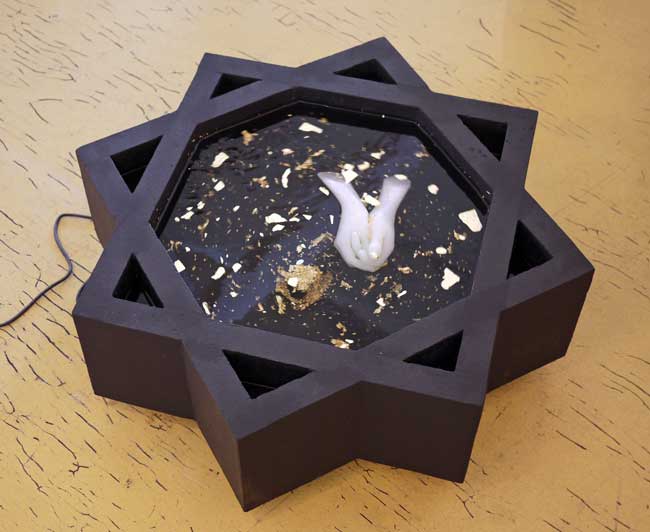
Fontaine, 60 x 120 x 120 cm, 2013, bois, peinture, feuilles d'or, eau, moteur, cire
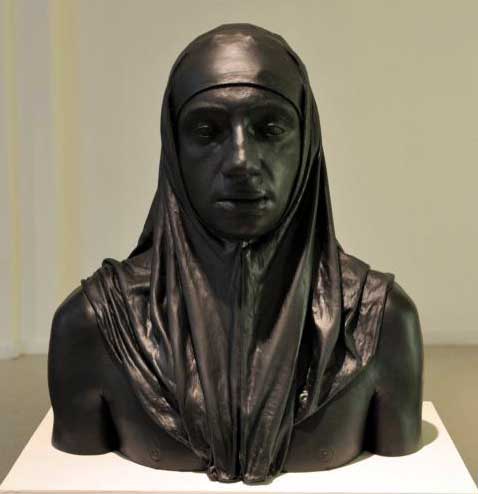
"Vierge noire", 60 x 50 x 20 cm, 2012, Sculpure: plâtre + divers matériaux, ed. 3

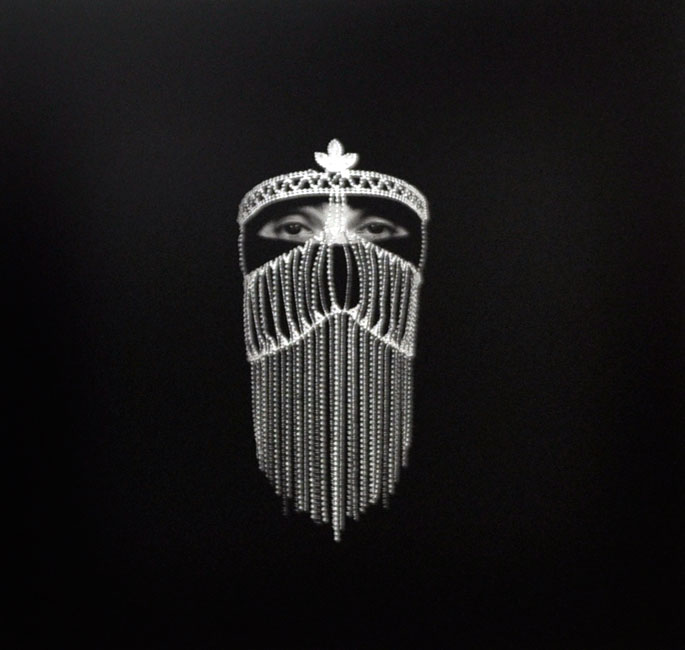
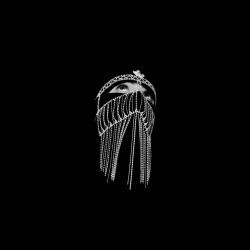
Créature pour Chaman, I - II - III, 60 x 60 cm, 2012, C-print on dibond, ed 4
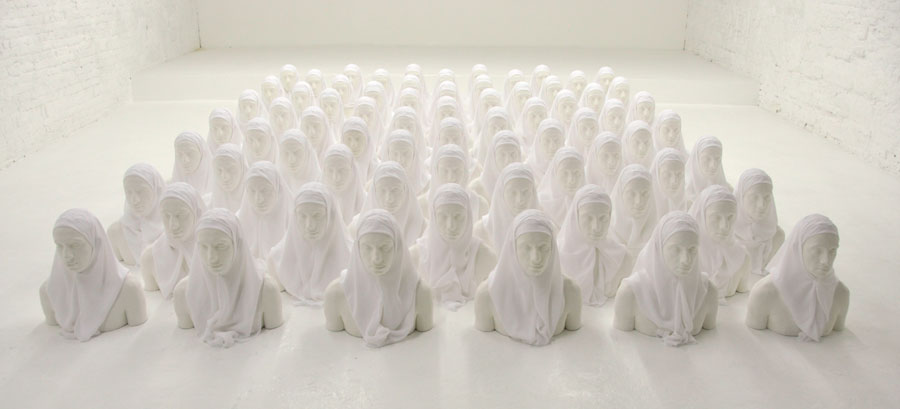
72 Vierges, installation at MAAC, Brussels
'Equilbres'
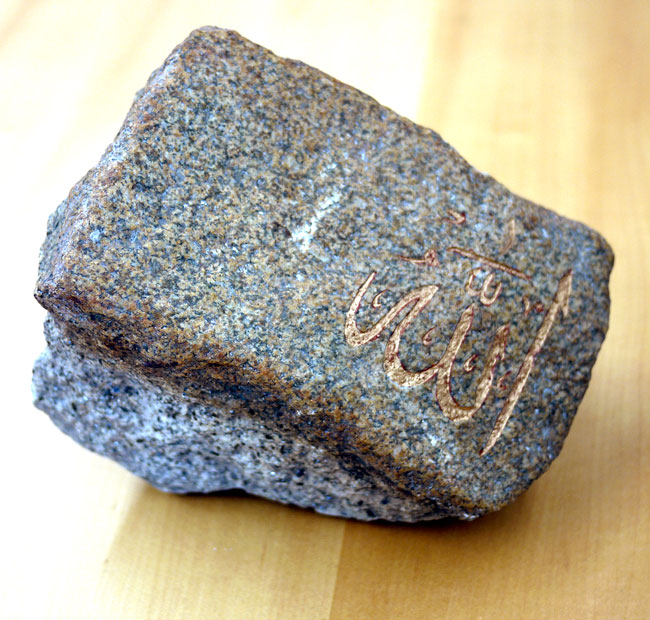
'Pave'
The Assembly | 2011/2013
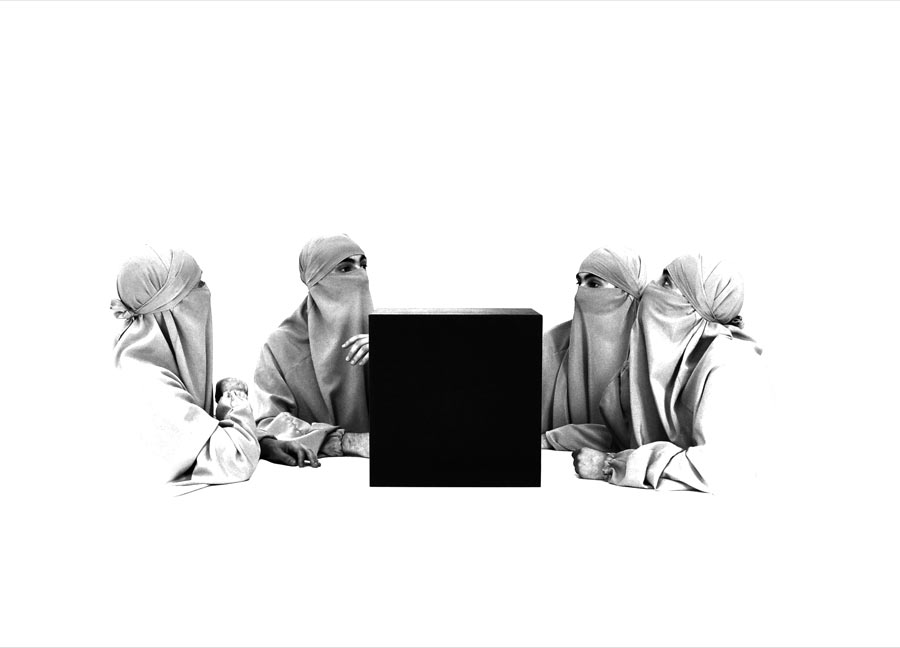
The Assembly, 82 x 120 cm,2011, C-print, ed 3/4
It's More Sexy ou Vierge à l'Enfant | 2010
Les Talons d'Allah | 5/9 - 17/10/2010
De performances en installaties van Mehdi-Georges Lahlou nemen de problematiek van culturele en genderidentiteit op de korrel, op een zodanig humoristische manier dat ze in elkaar vervloeien.
In tegenstelling tot de biologische sekse, is genderidentiteit een sociale conventie, en wordt ze beïnvloed door de cultuur waarin ze ontstaat, welke dat ook moge zijn.
Lahlou jongleert met verschillende gemeenschappen, etnieën en gendervariaties en ondergraaft bestaande conventies door zijn burleske acties. Hij maakt een typologie van de clichés over de Arabo-islamitische wereld en valt ze aan, middels rode naaldhakken, tijdens zijn performances die ook sportieve evenementen zijn, erop gericht om zijn viriliteit te testen.
De naaldhakken zijn hier het symbool van de homo, de transseksueel en de travestiet.
Het ‘hoofd van een Arabier’ van de foto draagt de schoenen van een vamp: stigma + stigma= 0.
Mehdi-Georges Lahlou stelt de definitie van mannelijkheid in de islamitische cultuur in vraag. In elk van zijn performances test hij onophoudelijk hoe die cultuur aan het wankelen wordt gebracht, hier bij ons zowel als in Noord-Afrika, door het neerhalen van de geslachtsbarrières.
Hij droomt dat de ‘tegengestelden’ zich verzoenen en dat er geen einde meer komt aan het Wonder(baarlijke).
[E. Bouvard, 2010]
-----------------------------------------------------------
Mehdi-Georges Lahlou was on the scenes of contemporary dance (with Maria La Ribot (E) The Company Le Douaré (FR), etc.) before been enrolling at the Beaux-Arts school in Quimper and after in Nantes (Fr).
There he was passionate by performance art and video. Inspired by artists like Journiac, Molinier, Bowery, Viola, Neshat, Pane or Abramovic. He developed a poetic work on the identity, through imagery burlesque, combining travestissement and chimeric characters who parade to better hide their internal nil. Based in Brussels, Surrealism ground, he doesn’t stop talking about his own identities for better explore those of the others.Mehdi-Georges specifies the guidelines of his work, puting in question the representation, and the place of a body, or sexual body in Muslim cultures.He creates images where is confronted a double or a triple stigmas, through, among other, with the exhaustion of a fetish, for example, this of the high heel red shoes. He confronted it, as well, to the Cobblestones of our cities (the pavement of early streets), to objects, and as religious symbols.In his Art Works, as paintings, installations, objects, photographs..., Lahlou tries to find bridges, utopian, but humorous between North and South. What is an impossible synthesis.
-----------------------------------------------------------
Mehdi-Georges Lahlou était sur les scènes de danse contemporaine (collaboration avec Maria La Ribot (E), la compagnie Le Douaré (FR),etc ) avant de s’inscrire aux Beaux-Arts (Quimper, puis Nantes) Il s’y passionne pour l’art de la performance et de la vidéo. Inspiré par des artistes comme Journiac, Molinier, Bowery, Viola, Neshat, Pane ou encore Abramovic. Il développe un travail poétique sur l’Identité à travers une imagerie burlesque mêlant travestissement et personnages chimériques qui paradent pour mieux masquer leur néant intérieur.
Installé à Bruxelles, terreau du surréalisme, Mehdi-Georges ne cesse de parler de ses propres Identités pour mieux explorer celles des autres. Il précise les orientations de son travail, questionnant la représentation et la place d’un corps, ou corps sexuel, dans les cultures musulmanes.
Il crée des images où se confrontent un double, voire un triple stigmate. À travers entre autres, l’épuisement d’un fétiche, celui de l’escarpin rouge, qu’il confronte tout autant aux pavés de nos villes qu’aux objets et symboles religieux.
Dans son travail plastique, peintures, objets, installations..., Mehdi-Georges tend à trouver des passerelles, utopiques, mais humoristiques entre Nord et Sud. Il s’agit d’une impossible synthèse.

Tango, 80 x 65 cm, 2010, lambda photo on dibond, ed 4 + 2 ea
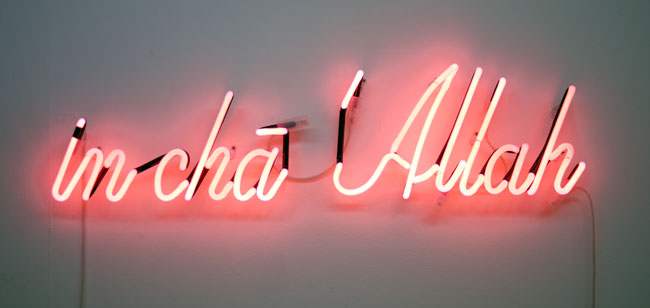
Rose, 24 x 100 x 4 cm,2010, neon, ed 3 + 2 ea
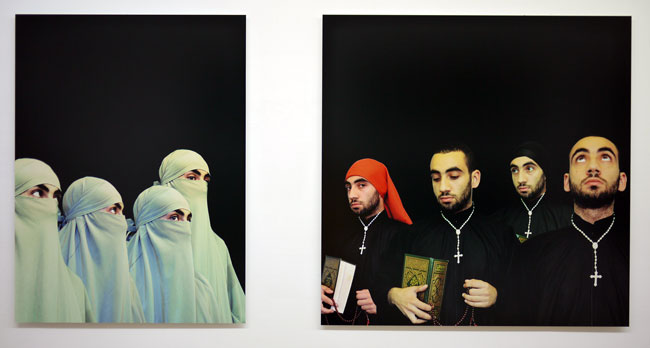
The Meeting, 90 x 67 & 90 x 91cm, 2010, lambda photo on dibond, ed 4 + 2 ea

Ouli I Azam | Les Plus Decides, six parts, 39 x 39 cm, 2010, text on textile, unique
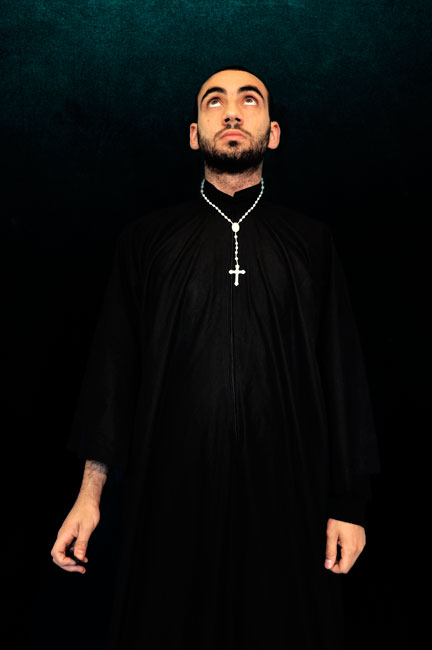
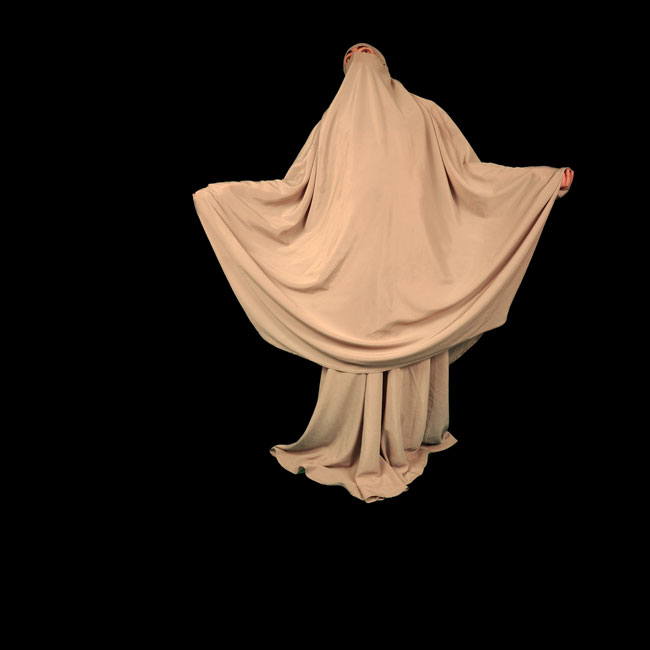
Devout with the Cross & Devout with the Niqab, 50 x 33 & 50 x 50 cm, 2010, lambda photo on dibond ed 4 + 2 ea
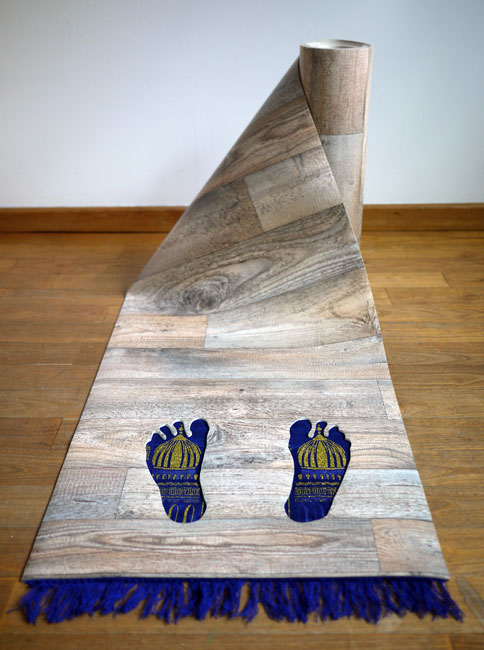
Sans Titre

Autoportrait au Pasteque, 40 x 40 cm, 2010, lambda photo on dibond ed 4 + 2 ea
Earlier works:
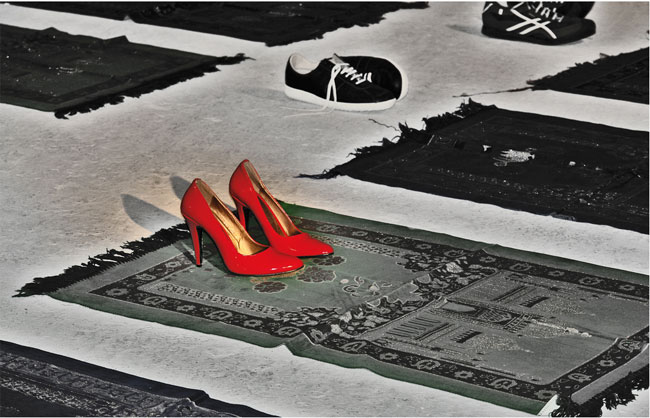
Cocktail ou Autoportrait en societe 1, 50 x 70cm, 2009, photo, ed 4 + 2 ea

Portrait de Famille, 51 x 71 cm, 2009, photo, ed 4 + 2 ea
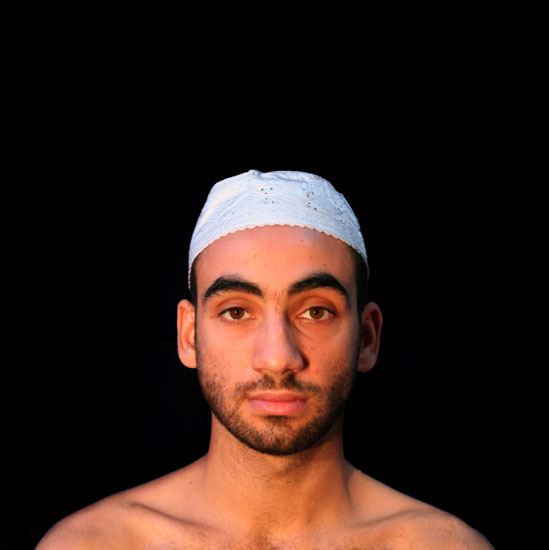
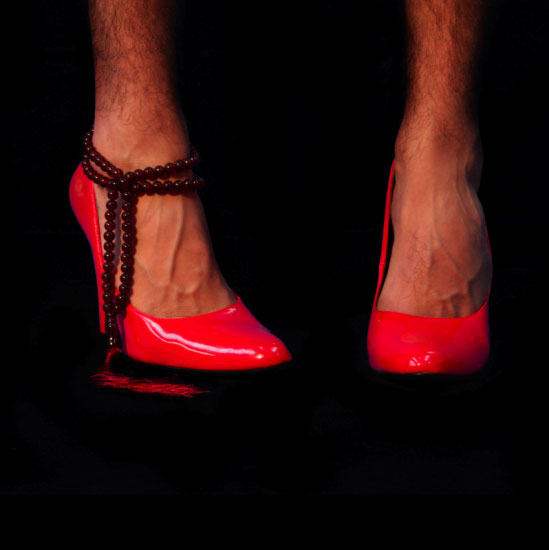
Sans Titre - Haut & Bas, 50 x 50 cm, 2009, photo, ed 4 + 2 ea

Mouvement decompose, 2010, photo, ed 4 + 2 ea

Ceci n’est pas une femme musulmane, 24 x 20 cm, 2009, photo, ed 4 + 2 ea
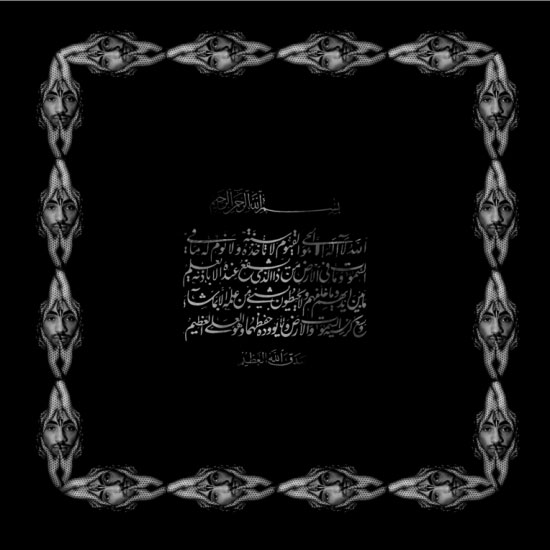
Sans Titre [Al Fatiha], 100 x 100 cm, 2010, photo, ed 4 + 2 ea
